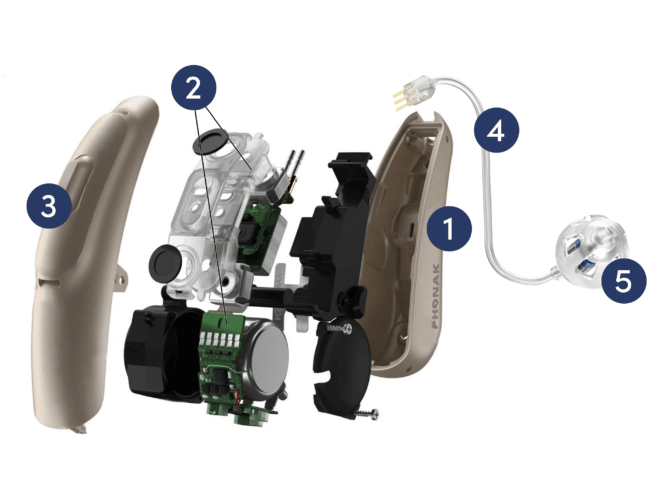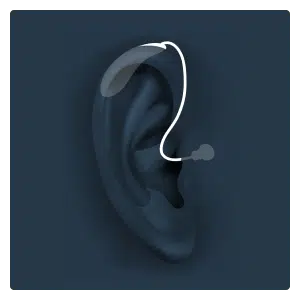
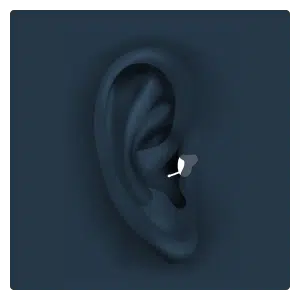
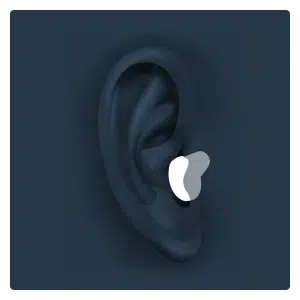
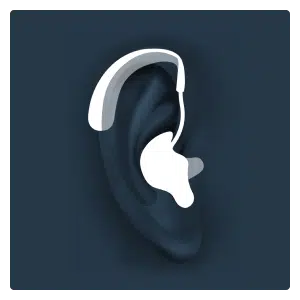
Receiver in Canal (RIC)
BENEFITS
- Most common type due to durability and fit flexibility
- Works for many degrees of hearing loss
- Available in rechargeable models
- Connects to phone/television
CONSIDERATIONS
- More visible than some other models
- Not always comfortable for patients with glasses
83% of our patients choose this model
Learn more about hearing aid types
Completely in canal (CIC) / Invisible in the canal (IIC)
BENEFITS
- Discreet and cosmetically appealing
CONSIDERATIONS
- Blocks the ear canal, with limited space for venting
- Uses small batteries that must be replaced every 3 days
- Limitations on the technology due to size
- No streaming with phone/television
3% of our patients choose this model
Learn more about hearing aid types
In the ear (ITE) / In the canal (ITC)
BENEFITS
- Some connect to phone/television
- Good for people with arthritis or dexterity issues
CONSIDERATIONS
- More visible than some other models
- Only a few brands offered as rechargeable
- For ITC, there is a limitation on the technology due to size
4-6% of our patients choose this model
Learn more about hearing aid types
Behind the ear (BTE)
BENEFITS
- Ideal for severe to profound hearing loss
- Available in rechargeable styles
- Most durable of all styles
CONSIDERATIONS
- Most visible of all styles
- Not always comfortable for patients with glasses
4% of our patients choose this model
Learn more about hearing aid types
Did you know
hearing loss is directly related to these common medical conditions
Click on the buttons for more info.
-
diabetes
-
dementia
-
kidney disease
-
tinnitus
-
heart disease
-
risk of falls
-
depression
-
aging

What do hearing
aids cost?
You can buy hearing aids over-the-counter online or at local pharmacies and big box stores, but these devices only correct mild to moderate hearing loss and often lack the fit and features you need.
The safer bet is to buy from a hearing care professional, who will first accurately measure your hearing loss and ear health. Then, this provider will recommend the right prescription hearing aids that work for your hearing loss, fit the device to your ear, and help you with any adjustments. When you buy from one of our providers, you get comprehensive care and follow-up visits for the life of the device—and the comfort of knowing we are always here for you.
Where to buy
hearing aids
You can buy hearing aids over-the-counter online or at local pharmacies and big box stores, but these devices only correct mild to moderate hearing loss and often lack the fit and features you need.
The safer bet is to buy from a hearing care professional, who will first accurately measure your hearing loss and ear health. Then, this provider will recommend the right prescription hearing aids that work for your hearing loss, fit the device to your ear, and help you with any adjustments. When you buy from one of our providers, you get comprehensive care and follow-up visits for the life of the device—and the comfort of knowing we are always here for you.
Benefits of buying from Sound Advice Hearing Doctors
- Risk-free trial
- Help with hearing aid selection & fit verification
- Unlimited cleaning & adjustments for the life of your device warranty
- Select from ongoing in-person, virtual, or curbside care
Getting started is easy
-
Schedule an appointment
Meet with your local hearing care professional.
-
-
Comfortable & easy testing
Count on a hearing test and evaluation from our trained providers
-
-
We will find your perfect fit
If hearing aids are a solution for you, we’ll help you find the perfect ones to fit your ear and support your best hearing.


